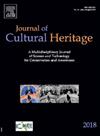Studying ancient Egyptian copper-alloy objects via X-ray diffraction and Machine Learning
IF 3.5
2区 综合性期刊
0 ARCHAEOLOGY
引用次数: 0
Abstract
The paper reports a novel approach to studying the manufacturing techniques of ancient Egyptian metal objects. The study approach was performed on 12 copper-alloy objects, the majority of which are metal vessels. They were part of the burial assemblage of the Theban Tomb (TT) 8, belonging to the ‘overseer of works at the Great Place’ Kha and his wife Merit, that was found undisturbed in 1906 in Western Thebes (Egypt). The funerary assemblage, dating to the mid-18th Dynasty (ca. 1425–1352 BCE) is currently kept at Museo Egizio, Turin (Italy). The investigation aimed to gather further information regarding the manufacturing processes and methods that were employed to produce the copper-alloy objects selected for analysis. The bronze vessels and stands are among the best and most sophisticated metal artefacts from New Kingdom Egypt in terms of their technology and preservation. Here, non-destructive and non-invasive X-ray fluorescence (XRF) data is reported, and X-ray diffraction is coupled with machine learning which allows one to define specific data clusters that are compared with the overall role of the objects from a historical perspective and its macroscopic features. We identified four main groups as a function of the metalworking methods, spanning from highly homogeneous microscopic structures induced by a high thermal treatment such as annealing to extremely nonhomogeneous microscopic structures compatible with cold metalworking. This classification from a microscopic point of view is successfully integrated with a macroscopic classification by shape, demonstrating a particular processing method for each intended design type and use.
通过x射线衍射和机器学习研究古埃及铜合金物体
这篇论文报道了一种研究古埃及金属制品制造技术的新方法。研究方法在12个铜合金物体上进行,其中大多数是金属容器。它们是底比斯墓(TT) 8的一部分,属于“大地方工程的监督者”Kha和他的妻子Merit,于1906年在西底比斯(埃及)被发现,没有受到干扰。这些丧葬品可以追溯到18王朝中期(约公元前1425-1352年),目前保存在意大利都灵的埃吉齐奥博物馆。调查的目的是收集有关制造工艺和方法的进一步信息,用于生产选择用于分析的铜合金物体。从技术和保存角度来看,这些青铜器皿和支架是埃及新王国时期最好、最复杂的金属文物之一。在这里,非破坏性和非侵入性x射线荧光(XRF)数据被报告,x射线衍射与机器学习相结合,允许人们定义特定的数据簇,从历史角度及其宏观特征与对象的整体作用进行比较。我们确定了金属加工方法的四个主要类别,从高热处理(如退火)引起的高度均匀的微观结构到与冷金属加工兼容的极端不均匀的微观结构。这种从微观角度的分类成功地与宏观形状分类相结合,为每种预期的设计类型和用途展示了特定的加工方法。
本文章由计算机程序翻译,如有差异,请以英文原文为准。
求助全文
约1分钟内获得全文
求助全文
来源期刊

Journal of Cultural Heritage
综合性期刊-材料科学:综合
CiteScore
6.80
自引率
9.70%
发文量
166
审稿时长
52 days
期刊介绍:
The Journal of Cultural Heritage publishes original papers which comprise previously unpublished data and present innovative methods concerning all aspects of science and technology of cultural heritage as well as interpretation and theoretical issues related to preservation.
 求助内容:
求助内容: 应助结果提醒方式:
应助结果提醒方式:


